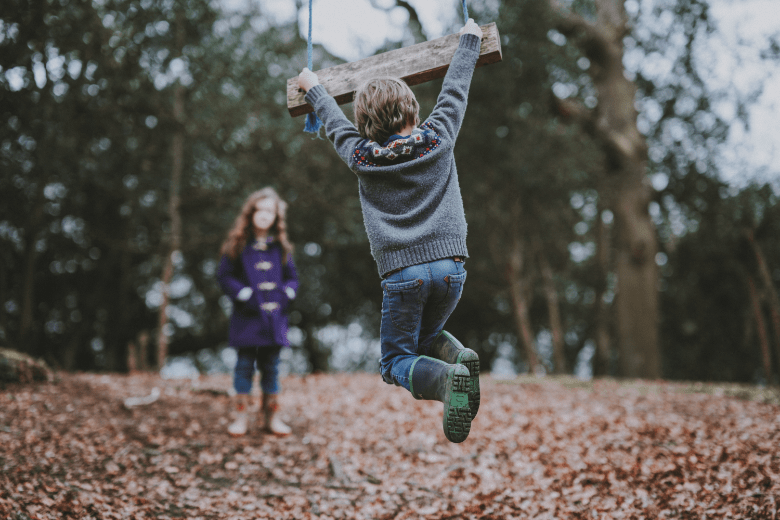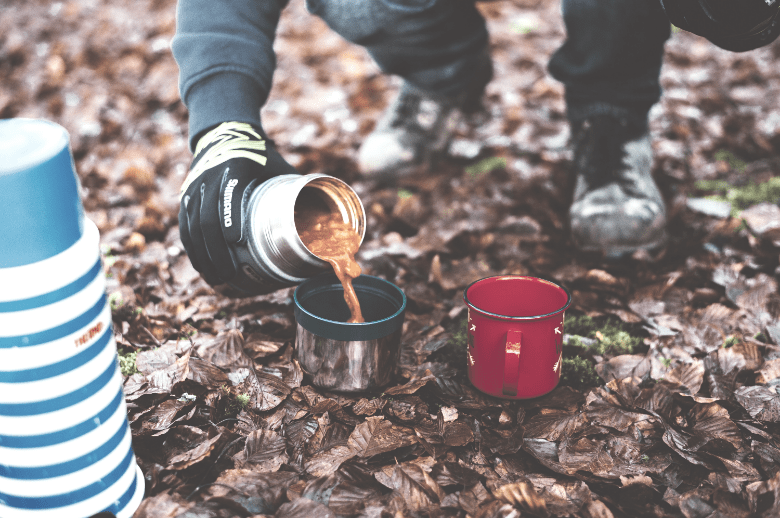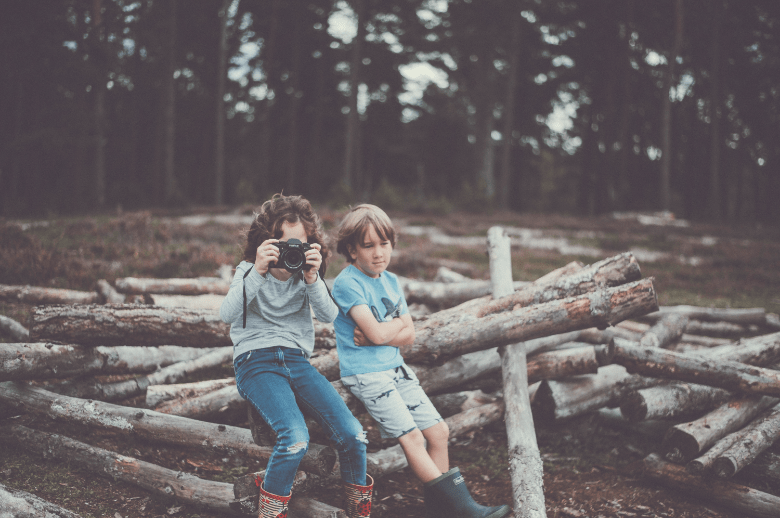My very first camping trip was with my family when I was no older than ten years old. At that age, I didn’t really realize how much preparation and time goes into planning a family excursion, especially if you’re going camping with kids—my parents simply did all the work, and I went along for the ride, enjoying our together time in the wilderness.
That was the picture I had in my head when I took my family for our first camping trip. My kids were young, probably around the same age I was on my first trip, but I knew they could handle themselves. Little did I know what was ahead of me.
Needless to say, I could have prepared more and better.
Are you organizing a camping trip with kids? Whether you’re a father wishing to take his son for a men-only getaway or you’re a troop leader taking charge of a group of girls, preparation is key. Let’s look at some important things to keep in mind when taking kids camping.
Knowledge is Key
You may be thinking, “Well, duh. That’s why I’m doing this research.” When I mention knowledge in this section, I’m referring to the knowledge of the kids. One of the best ways to prepare yourself for a kid-inclusive camping trip is to prepare the kids.
Anyone who has kids or works with them knows how many questions they ask. These questions often refer to the “when” and “why” of things. When is snack time? When can we stop walking? Why do I need sunscreen? Why do we have to stay together?
Additionally, kids have wild imaginations. It’s likely that the word “camping” for you means something different for them.
In order to have the best experience possible, sit down your young people and explain to them exactly what you’ll be doing. Tell them where you’re going and why. Let them know what kinds of activities you will be doing. You can even tell them what kind of food you’ll be eating or ask them if they would like to choose a few favorite snacks.
If they’re old enough to help, you can give your kids a to do list with items they might need. Get them involved, but make sure you have a solid hand in the process, so nothing is left undone or misunderstood.
Once you have arrived at your campground, drop your gear and have your whole group walk around the site together. Mark out your safety boundaries: how far your kids can go and when. Establish safety rules and enforce the “no wandering” standard. It is important to do this right away before the wandering begins.
Practice
If you want to take your knowledge approach a step further, try practicing your camping trip! You can do this in your very own home. Pitch the tent in your house or even in your backyard and have the kids sleep in it. Your kids can get a feel for the new environment and receive a small taste of what real camping will be like.
If you’re feeling extra ambitious, you may even want to try performing a trial run ay a nearby park. Before you take your kids to a full-fledged campsite for the weekend, take them to an overnight-friendly park in the area. This is a great way to test the waters.
At the same time, you as the parent or guardian can take notes during this test. I highly recommend taking a notepad and writing down things you forgot, what to improve, and specific needs of each child.
Plan Activities
Children tend to get bored fast. While a weekend at a lake or campground may be enough of an activity for you, your kids will expect to actually do something. All the time. Make sure you plan plenty of activities—you’ll certainly hear about it if you don’t.
My family and I will sometimes bring our bikes, depending on which campsite we visit. Some campsites have paved trails that are great for biking. Not only is it a fun time for the whole family, but it’s an excellent exercise.
Devise some craft ideas using items from nature, like leaves, pinecones, and stones. Try planning a nature scavenger hunt—winner gets a prize, of course. Pick one night of the trip to be s’mores night. Help the kids roast their marshmallows over a safe fire.
Other activities to consider include sports, fishing, swimming, and campfire story time. If you play the guitar, that’s a bonus—host a family singalong by the fire before bedtime.
Pack the Essentials
As I mentioned before, it’s important that you let your kids help with the packing. It allows them to contribute and feel apart of the trip, and it can also be a comfort to them knowing they have a say in what they bring.
First things first, pack a tent that has enough room for everyone. If your kids are old enough, you may want two tents: the parents’ tent and the kids’ tent. It can be fun for the kids to hang out together without mom and dad, and having their own tent gives them a sense of independence.
Check to see if your tent has a footprint. If it doesn’t, you will want to invest in one. A footprint is a ground cover for under your tent. It makes the ground more comfortable and protects you from moisture.
Make sure everyone is happy and comfortable with their sleeping gear. While some kids are satisfied with sleeping bags, others may prefer air mattresses or even cots. Every child is different, so figure this out ahead of time.
Pack extra blankets, too. Though it may be hot during the day, the nights can get surprisingly cold.
Bring along chairs for everyone, as well as flashlights or headlamps. While you’re at it, make sure you pack extra batteries.
Every family should have a First-Aid kit. Take it from me, it’s better to be safe than sorry, and you never know when you’re going to need a band-aid. On top of this, always pack sunscreen and insect repellant. You’ll hear a lot of complaints from the kids if you don’t. Whether or not your campsite has showers or not, bring soap. Don’t forget toothbrushes and toiletries for everyone too.
Prepare Food
Cooking outdoors over an open fire has a kind of rustic, romantic appeal to it. This can certainly be the feel if you want it to be. However, it tends to stray from that image once kids are in the picture. You’re going to want to do everything you can to make mealtime quick and easy on the campground.
Plan out your meals—that’s right, every single one of them. Write them down and then prepare as much as you can at home. This can include cutting up veggies, carving out portions, marinating meats, etc.
Once you have your meals decided, make a checklist of everything you are going to need for that meal. What I mean are things like condiments, utensils, tools, etc. For example, if you plan on bringing food in cans, you better pack that can opener. Want to roast some hot dogs? Bring the buns, ketchup, mustard, and skewers along.
We have always invested in travel containers for camping. For instance, we have special plastic salt and pepper shakers that are perfect for camping. The locking lids don’t spill, and there’s no glass to worry about.
Let your kids choose some of their favorite snacks to bring. Obviously, their snacks should be practical, and if you can, keep them as healthy as possible. My favorite snacks to bring are fruit in baggies—things like apples, grapes, and oranges. I also love a good trail mix, probably the best choice when it comes to easy camping meals for kids.
It is essential that you and your children stay hydrated. While your campsites will most likely have water sources—let’s be real, most parents won’t rough it with kids to the point of no water—it’s a good idea to pack a variety of juice boxes or sports drinks too. Your kids might get bored of plain water.
We like to bring juice powder to add to our water. It saves space, and it’s simple to use. Just pour the powder into a water bottle and shake it up to make juice, iced tea, lemonade, or even a sports drink.
Clothing
Each of your children should have proper clothing. Light layers tend to work out nicely. Lighter clothing is easier to carry, and layers help when it gets cooler at nighttime. Pack at least one outfit per day, plus a minimum of one extra outfit.
Bring different clothes to sleep in than what they wear during the day. After a long day of activities outside, your kids will be dirty and sweaty. A fresh set of sleepwear will go a long way.
Pack raingear. I always go with a waterproof windbreaker. These jackets shield you from the rain without being too heavy or bulky.
If you are camping near a lake or river and plan on swimming, be sure that everyone has a swimsuit. Additionally, remember to pack a towel for everyone. Since you can never be sure what is at the bottom of a lake, bring water shoes to protect your kids’ feet.
A good option to include is a hat. Hats are an excellent way to keep the sun off of a child’s head. They’ll enjoy it even more if you let them pick out their own hat.
Lastly, invest in some tough, easy-on shoes. You’ll want shoes that are comfortable and supportive but are also durable and lightweight. If you’re camping with younger kids, you are also going to want shoes that are easy to take off and put on.
Extra Tips
You can plan the perfect trip, but that doesn’t guarantee it will go the way you want. Utilize a few of these extra tips to keep your children safe and happy along the way.
A seasoned camper knows that camping sometimes requires dangerous tools. Dangerous tools plus a curious child is never a good combination. I suggest buying your kids a play version of camping equipment. There are sets of camping toys that include lanterns, Swiss army knives, compasses, thermoses, and other tools. They can play along without hurting themselves!
Bring along a plastic tub to hold any toys or sports equipment. It’s a great way to keep all these items in one place and transport them around your campsite.
Your child might not be used to sleeping on the ground, and that can lead to a miserable trip for everyone. Consider investing in cot bunk beds for your kids. Not only will they love the thrill of the bunk beds, but they will likely be more comfortable this way.
Pack glowsticks and glow in the dark items to surprise your kids with when it gets dark. This is a super fun addition, and it also doubles as a comfort to any kids who are afraid of the dark.
A good tip I’ve learned is investing in foam floor tiles. This tip is especially good for those of you who dare to go camping with toddlers. Place the connecting foam floor tiles along the bottom of your tent beneath your sleeping bags and air mattresses. Not only will it provide a nice cushion for your crawlers and fallers, but it will add a little color and pizzazz to your temporary home!
That’s a Wrap!
My final piece of advice is this: bring a camera and make some wonderful memories. If your family is anything like mine, these trips are going to create some of your favorite stories. The photos you take will last a lifetime, and your kids will look forward to many more adventures.
Camping with your kids shouldn’t have to be a chore. If you find that you’re dreading your outdoor family vacation, chances are you are not prepared enough. Use these tips and do plenty of research to make the most of your quality camping time.



